Day 4: Ayurvedic Eating and Food Combining
Published on September 9th, 2018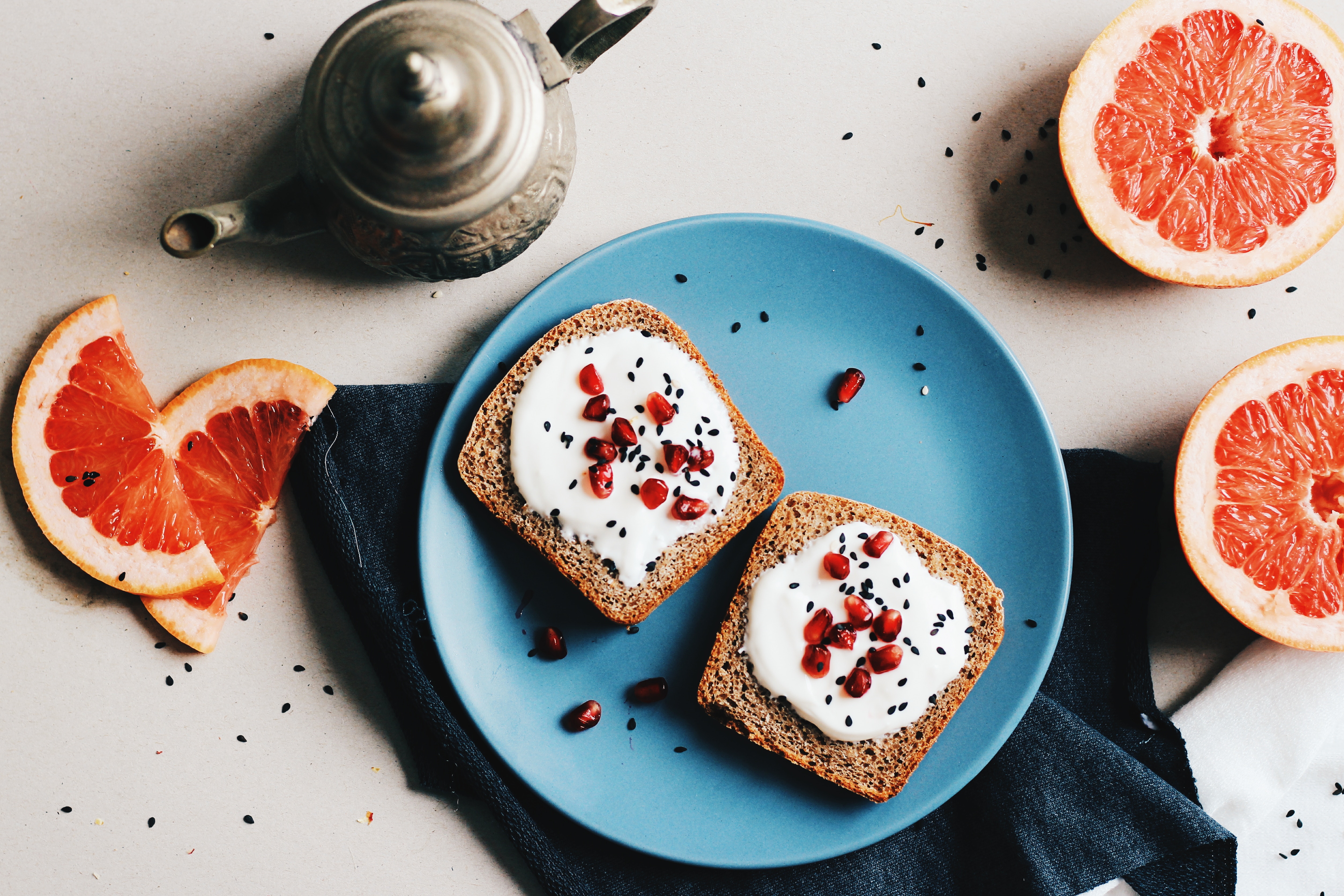
For years, my husband and I would spend a Saturday morning every couple of weeks making freezer smoothie packs so that we would have a quick grab and go breakfast for the mornings. Our smoothies would contain bananas, strawberries, turmeric, ginger, apples, spinach, kale, almonds, flax seeds, among other things- all healthy stuff right? That’s what we thought too!
We were so puzzled when we would experience bloating and other gastrointestinal symptoms because we thought we were eating SO healthy.
Little did we know…that morning smoothie was a nightmare wreaking havoc on our digestion.
We were drinking an ice cold beverage (an Ayurvedic no-no), we were eating the same fruit year around (another Ayurvedic no-no) and we were combining incompatible foods (yet another Ayurvedic no-no). We learned the hard way and months later, we’re still working on regulating our digestion.
But what’s upsetting is that most of “healthy” America eats just like us.
No wonder our store shelves are stocked with probiotics, dietary supplements, and drugs for gastrointestinal discomfort.
The concept of incompatible foods is not something we’re exposed to in our culture here. We don’t think twice before grabbing that orange juice to drink with our egg sandwich and bowl of cereal. Ayurveda has a thing or two to teach people like us.
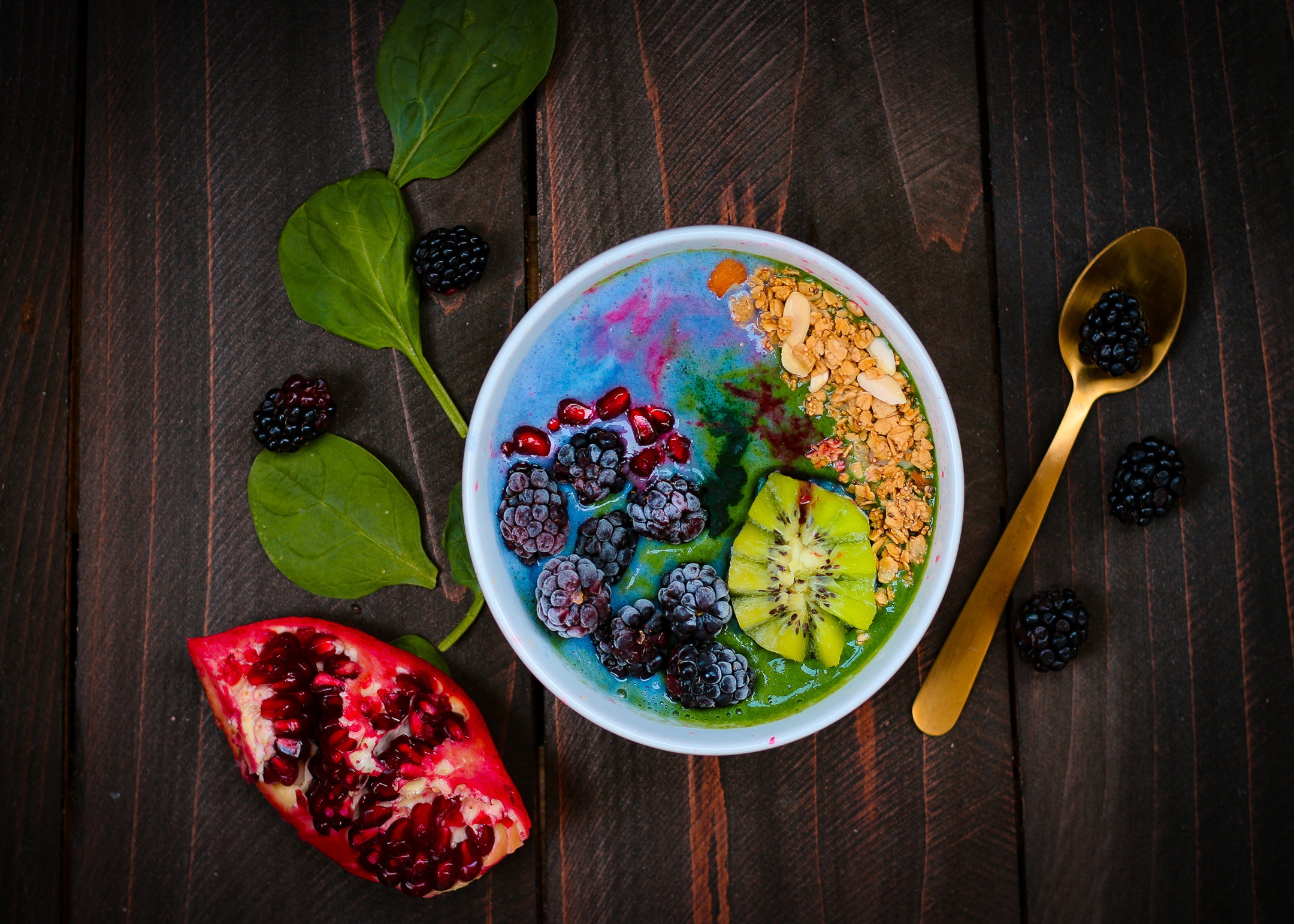
Every food has some type of beneficial property, but sometimes having two beneficial foods together results in chaos in our stomach.
For example, we see many failed marriages due to incompatibility between two very smart and successful individuals. In the same way, both foods can be equally beneficial, but if incompatible, they will fight in your stomach. Then the person that has to suffer the abdominal pain, bloating, diarrhea, constipation will be you.
Having a healthy relationship with food requires you to learn which foods go well with each other and which don’t. This way, food can be digested properly and nutrients can be absorbed for optimal use within the body.

Seasonal Eating:
Eating sharp and hot foods (that aggravate Pitta) during the Summer months and eating cold and dry foods (that aggravate Vata) during the colder months is contraindicated in Ayurveda. This will only create further imbalance in the body as nature is already promoting this imbalance with the summer heat or winter cold. For example, if I am a Vata-type and I consume iced coffee in November and December which are Vata-dominated months, my body is already exposed to the cold and dryness of the season and adding more coldness via food into my body is just increasing the Vata imbalance further. This puts me at risk for illness. Each season is governed by specific Doshas. Eating foods that don’t aggravate the Doshas further is the cornerstone to seasonal eating in Ayurveda.
Spring – Kapha, Pitta
Summer – Pitta
Fall – Vata
Winter – Vata, Kapha
Eating at the right Time of Day:
The body’s biological clock is governed by nature’s chronological clock.
Below is a diagram depicting peak times for each Dosha. For example, Pitta is the highest from 10am to 2pm and so Ayurvedic principles recommend eating your largest meal during this time as the digestive fire is at its peak during this time. This is also the time when the sun’s heat is the greatest. See how our body functions relate directly to nature?
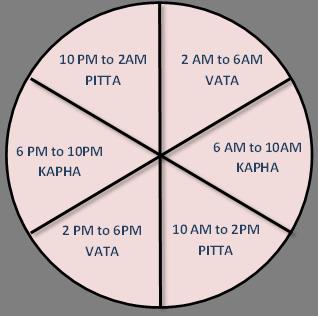
Temperature Control:
The only thing we really need to know about this is that mixing hot and cold foods is confusing for the body and it prevents proper digestion and absorption of nutrients. Don’t drink cold water/juice with meals, don’t eat ice cream while drinking coffee, etc. I simply avoid cold water and cold drinks altogether as they disturb the digestive Agni (fire). As far as foods, as long as cold foods are being consumed with other compatible foods and in the right season (Summer), there is no harm in enjoying that ice cream or lemonade.
Food Combining:
Below is the best chart I have found so far on food compatibility. There is much more to food combining than just this but this is a good place to start. I have a copy of this chart hanging up on my fridge as a daily reminder 🙂
| Compatible Foods | Incompatible Foods | |
| Milk | It’s best consumed on its own but can be combined with rice, dates, almonds, and oatmeal | Fruit (especially bananas, berries, melons, citrus), eggs, yogurt, meat, fish |
| Yogurt | Grains, vegetables | Fruit, beans, milk, cheese, eggs, meat, fish |
| Eggs | Grains, non-starchy vegetables | Milk, yogurt, cheese, fruit, beans, potatoes, meat, fish |
| Cheese | Grains, vegetables | Beans, milk, egg, yogurt |
| Ghee | Grains, vegetables, beans, nuts, eggs, meat, cooked fruits | Honey |
| Beans | Grains, vegetables | Milk, cheese, yogurt, fruit |
| Grains | Beans, vegetables, cheese, yogurt, other grains, eggs, meat, fish | Fruit |
| Fruits | Fruit can be eaten with other similar fruit (berries, citrus, etc) | Do not mix fruits with any other food unless fruit is cooked |
| Lemons | Grains, vegetables, beans, meat, fish | Milk, yogurt, tomatoes, cucumbers |
| Vegetables | Grains, beans, cheese, yogurt, nuts, eggs, meat, fish | Milk, Fruit |
*Information in this chart as found in Dr. Lad’s Ayurvedic Cooking for Self Healing
Combining the correct foods and avoiding incompatible food types may seem daunting as we’ve never been exposed to this concept before. There are just so many dos and don’ts but we need to remember that Ayurveda places importance on eating for how you feel. There are no set rules, just guidelines.
As you make small dietary changes and adopt this new Ayurvedic lifestyle, take a moment to reflect on how you feel post-meal and if you notice a change in your digestion and overall energy, then continue the dietary changes that work best for you.
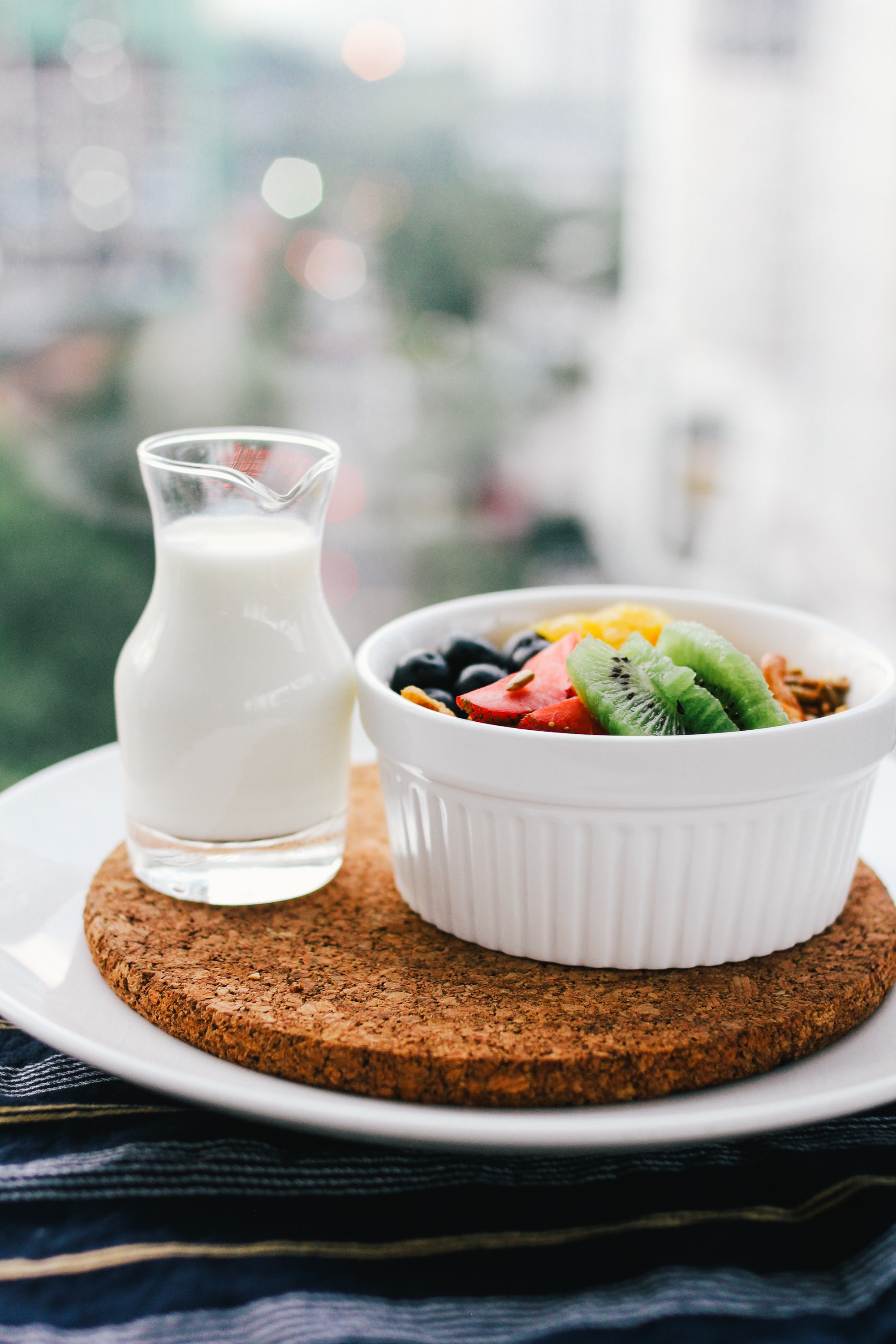
One of the incompatible food combos that I was shocked by was bananas and milk! Everyone in my family has bananas and milk usually on a daily basis. So I researched it further because I wasn’t trying to give that up without a fight – it’s like baby V’s breakfast 2-3 times a week! But turns out, when bananas break down in our stomach, they become sour. Mixing anything sour with milk causes curdling and disrupts digestion leading to the creation of toxins.
I tried it at home by mashing a banana with milk and leaving it out for an hour, and the milk did indeed curdle. SO unfortunately, no more milk and bananas for V. This is definitely a learning process for us. Being mindful of what we’re eating and cognizant of the effect certain food combos have on our body will help us to become more aware of what’s best for our digestion and ultimately for our mind and body.
Stay tuned for Day 5 🙂
Namaste.
7 Comments
Trackbacks/Pingbacks
- 5 Ayurvedic Tips for Weight Loss - Ayurveda | Honey, Ghee, and Tea - […] foods at the correct times is given a lot of importance in Ayurveda. Read more about food combining here.…
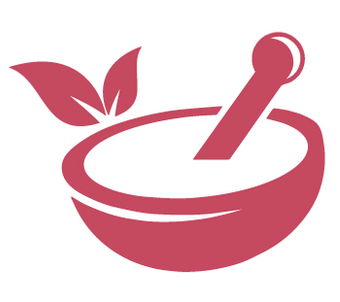
AMAZING advice! 🙂
Thanks!
Great info! If you don’t eat dairy products but substitute with say almond yoghurt, where would this place on the chart?
Hi Kalli! In Ayurveda, almond yogurt would be considered even farther away from nature as it is a “fake yogurt” and someone had to alter it to make it non-dairy and so its use is not recommended. In regards to properties and food combining, it should be considered similar to a yogurt due to its “sourness” and not combined with anything that dairy yogurt does not combine with. Ayurveda does not encourage the use of altered non-dairy products as milk, ghee, and yogurt are staples in an Ayurvedic diet. Hope this helps!
-Pooja
I Really like your blog! Ideal important information that has been truly helpful. I hope you and your loved ones have a very good day!
Greate article. Keep posting such kind of information on your blog.
Im really impressed by your blog.
Hi there, You have performed a great job. I’ll definitely digg it and personally suggest to my friends.
I’m confident they’ll be benefited from this website.
I am extremely impressed with your writing skills and also with the layout on your blog.
Is this a paid theme or did you customize it yourself?
Anyway keep up the nice quality writing, it is rare to see a great blog like
this one these days.